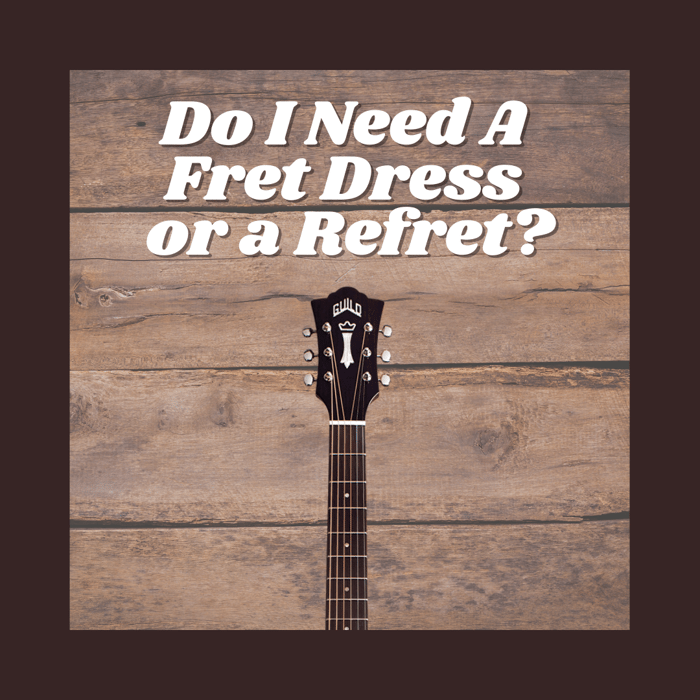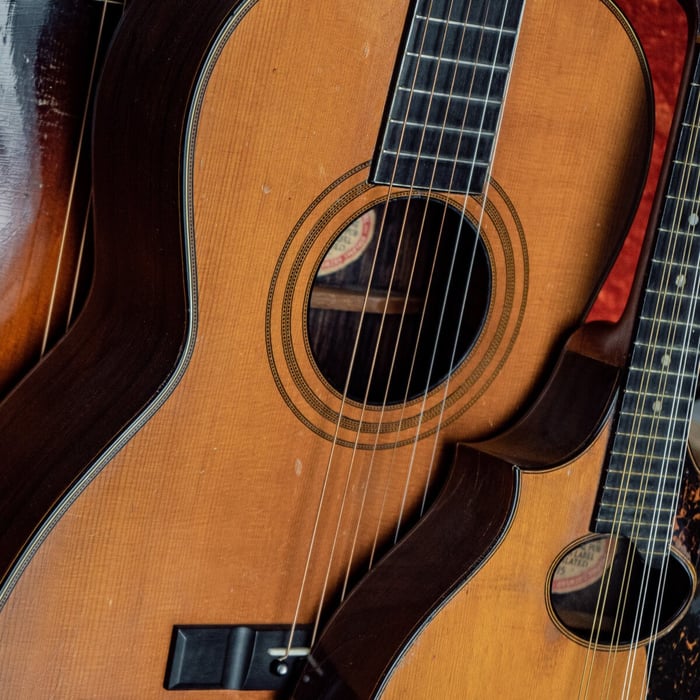Formally stated, Newton's Third Law is that for every action, there is an equal and opposite reaction. Simply stated, this means that in every interaction, there is a pair of forces acting on the two interacting objects.
One doesn’t need to study physics to understand Newton’s Third Law. It is perfectly illustrated by the relationship between an instrument’s frets and bridge.
Fretted instruments such as guitars, banjos, and mandolins, over time and continued use, benefit from either new frets or proper redressing of existing frets.
If your instrument has never had any fret work done, you should be looking into fret dressing instead of a full on refret. You know you need a refret when your guitar frets have visible divots, and the frets no longer have enough material (more on this shortly) for a simpler fret dressing procedure.

New frets (replacing old frets with new) are the costliest of the two options. Most frets are a nickel silver composition. Some frets are stainless steel. The benefit of a refret is that you can replace older worn-down frets with new frets. Many musicians have switched to Evo fret material. Evo sits in the middle between nickel silver and stainless when it comes to the hardness of the fret. It can be a good compromise. Keep in mind the gold color of Evo frets is not for everyone. That said, Evo frets can look really good on many instruments.
The bottom line is this. If you have never had any fret work done and there is minimal change to the material, go with a fret redressing – unless you just simply want to change the fret material.
If you have the frets redressed, frets will be leveled to the lowest point you have on your frets, which depending on level of wear could be too low and limit playability. This is where Newton’s Third Law comes into play.
Anytime you remove material from the frets (or nut, bridge/saddle) you will change the relation of the strings to the instrument’s parts. When you remove material from the frets, you will change the relationship/distance between the strings and the frets. That action will then cause the relationship of the fret level and bridge to change. If too much material is removed from the frets, you may also need to modify the bridge/saddle. Remember, for every action, there is an equal and opposite reaction.

Although your budget may determine how you address the fret wear issue, you would be wise to seek the advice of a professional luthier to determine a plan for your instrument. Dressing the frets after a few years of significant play is a good option. You might be able to do a second light redressing. If the instrument gets significant steady play, at some point you will need to do a complete refret. Our advice would be to do the refret sooner than later to avoid Newton!
With 25+ years of experience in the acoustic music industry as The Chapmans, our goal is to provide you with the best customer experience possible so we can be your music store for life. Voted NAMM Top 100 Dealer for 7 years in a row (2015-2021) & Top 3 Emerging Dealer in 2017, 2018 & 2019.
For more information, visit our online store at www.theacousticshoppe.com, give us a call at 417-720-1223, shoot us an email at info@theacousticshoppe.com, or stop by our showroom at 1913 E Seminole St. in Springfield, Missouri.



.jpg)



